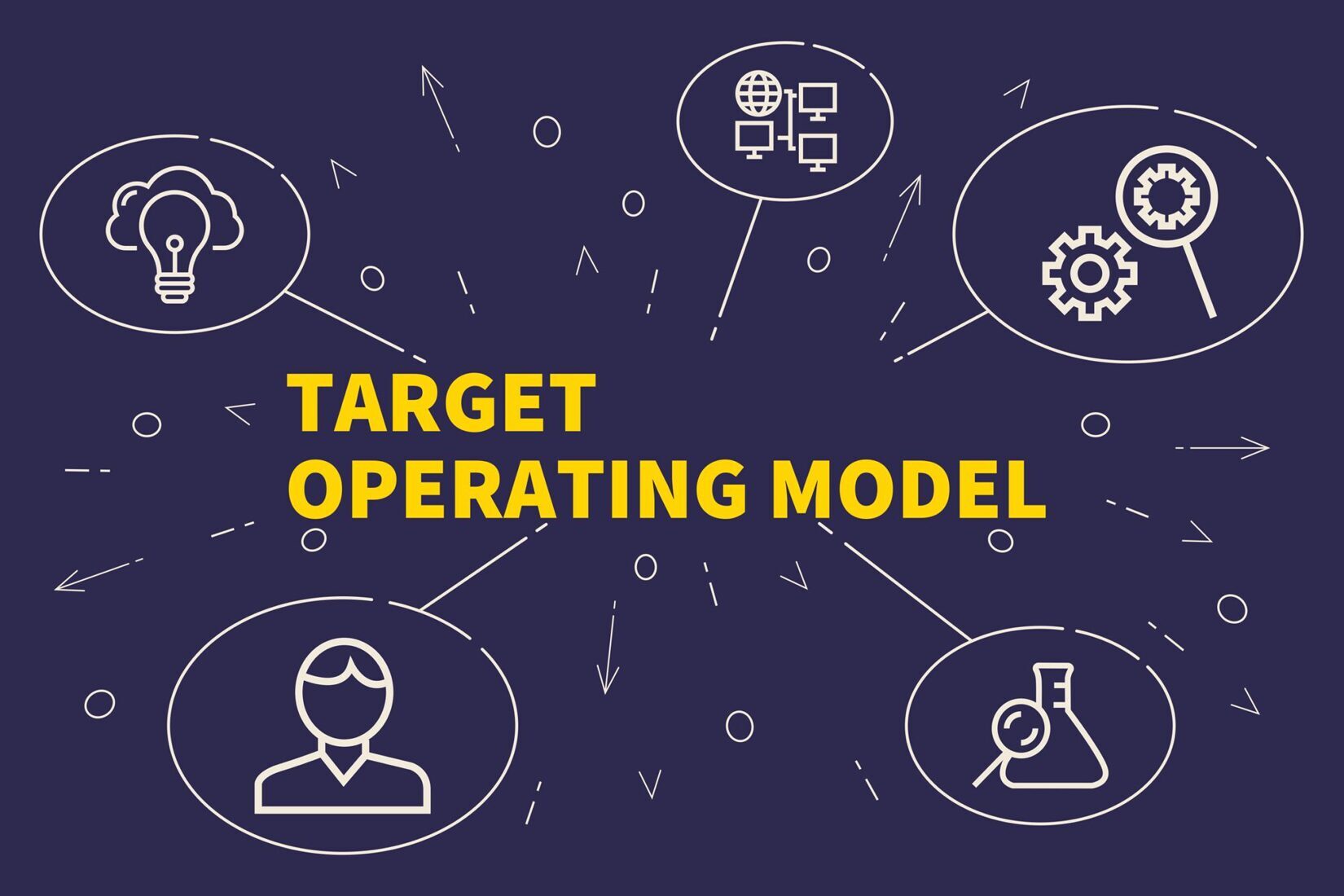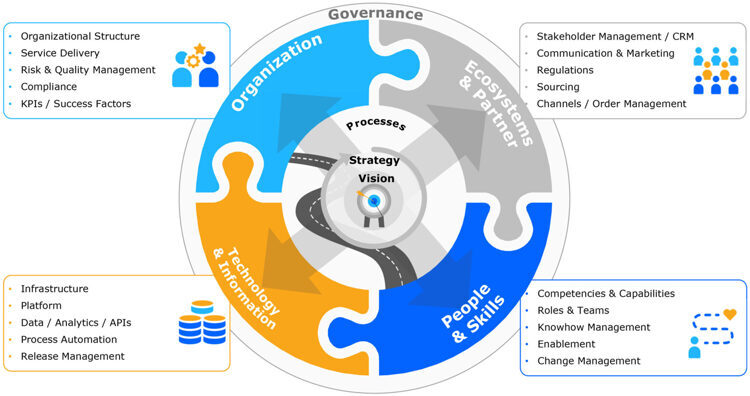From Vision to Victory: Unleashing the Power of a Target Operating Model
Taget Operating Model in a Nutshell
Contact: Tim Wäckerle

Taget Operating Model in a Nutshell
In the dynamic and ever-evolving business landscape, a well-defined Target Operating Model (TOM) serves as a strategic compass, guiding organizations towards sustainable growth, operational excellence, and transformative business outcomes.
A Target Operating Model (TOM) is a comprehensive framework that outlines how a firm will achieve its strategic objectives by defining its organizational structure, processes, people, and technology (Fig. 1). It serves as a blueprint for the desired state of the organization,
aligning various dimensions to support the company's strategy and vision. These dimensions include:
- Vision & Strategy: The vision and strategy create the TOM’s foundation and dimensions. They are the source of its guiding principles and its overarching direction that shape the design and resulting implementation
- Processes: The operational workflows, activities, and methodologies that enable the delivery of products or services
- Governance: Defining governance establishes the framework and processes for decision-making, accountability, and oversight to ensure effective and responsible management of the entire organization and its activities
- Technology & Information: The systems, tools, and digital infrastructure used to support and enhance business operations
- Ecosystems & Partners: The networks, collaborative ventures, and relationships with external entities that contribute to the organization's success
- People & Skills: The talent resources, competencies, and capabilities required to execute the strategy effectively
- Organization: The arrangement of roles, responsibilities, and reporting lines that facilitate efficient decision-making and coordination

Overview of a target operating model (TOM) and its dimensions
Where does a Target Operating Model come into play?
A TOM is relevant for multiple scenarios, for example:
- Grow the existing business: To expand operations and market presence, an organization needs a well-defined target operating model for guiding its growth strategy
- Sustain the business amid external shocks: When market dynamics or disruptive events occur, a target operating model helps an organization adapt, survive, and thrive in a changing environment
- Change the business: When strategic shifts or mergers and acquisitions take place, a target operating model assists in aligning the business with the new strategic direction or integrating the acquired entity effectively
Why is a Target Operating Model important?
A TOM is crucial at important junctures:
- Analyze and assess the status quo: By examining the current state of the entire organization or a specific division, a TOM helps identify inefficiencies and redundancies
- Eliminate pain points: It provides a roadmap to address identified challenges, eliminate inefficiencies, and streamline processes, ultimately improving overall performance
- Develop a plan and forecast: A TOM enables the creation of a structured plan and accurate forecasts, outlining how the organization will tackle and overcome obstacles
- Deep-dive into critical dimensions: It facilitates a comprehensive exploration of the organization, including its processes, technology, ecosystems and partners, and people and skills, aligning them with strategic objectives
Benefits of implementing a Target Operating Model
Implementing a TOM is a win:
- Alignment with strategic objectives: A TOM ensures that operational activities are closely aligned with the organization's overarching strategic goals and vision
- Clear roadmap for growth and change: It provides a clear framework and guidelines for achieving growth, sustaining operations, and/or implementing business transformation.
- Efficient resource and technology utilization: By aligning the organization's resources and technology with its strategic objectives, a TOM optimizes utilization and enhances performance
- Customer-centric approach: A well-designed TOM enables a customer-centric focus, leading to increased customer satisfaction, revenue, and profitability
